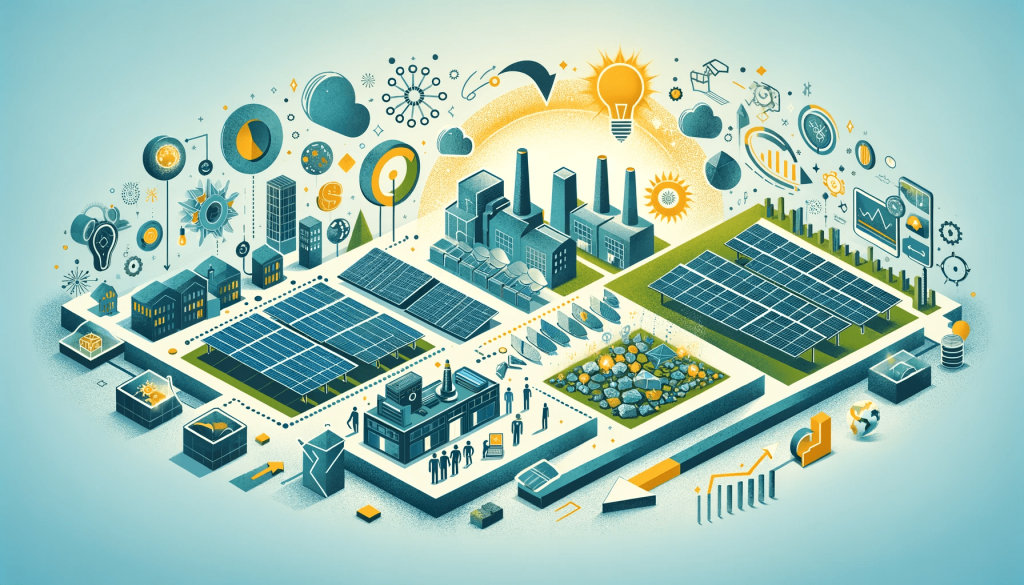
The solar photovoltaic (PV) industry, while often highlighted for its role in energy generation, encompasses a broad and intricate value chain. This chain offers numerous opportunities for innovation and economic growth, extending far beyond the installation of solar panels. As of early 2024, the global and Indian solar PV markets have witnessed a surge in activities across different segments of this value chain.
Understanding the Solar PV Value Chain
The solar PV value chain can be broadly segmented into upstream, midstream, and downstream sectors. The upstream sector involves the production of raw materials and manufacturing of solar cells and modules. The midstream sector includes the assembly of solar panels and the development of balance-of-system components. Finally, the downstream sector covers the installation, operation, and maintenance of solar systems.
Upstream Opportunities: Material and Manufacturing Innovations
Net Zero by Narsi
Insights and interactions on climate action by Narasimhan Santhanam, Director - EAI
View full playlistIn the upstream segment, India has made strides in manufacturing solar cells and modules, yet there is vast potential for further growth. Innovations in materials, such as the development of perovskite solar cells, offer opportunities for increased efficiency and reduced costs. Additionally, the integration of advanced manufacturing processes, driven by automation and artificial intelligence, can enhance production quality and scalability.
Midstream Development: The Role of Technology and Design
In the midstream segment, the focus is on assembling solar panels and developing system components that are more efficient, durable, and cost-effective. Innovations in solar panel design, such as bifacial modules and tracking systems, have the potential to significantly increase energy yield. Moreover, advancements in inverters and mounting systems play a crucial role in optimizing the performance and integration of solar PV systems.
Downstream Dynamics: Installation, Maintenance, and Beyond
The downstream part of the value chain involves the actual deployment of solar PV systems. In this area, opportunities abound in terms of innovative installation techniques, efficient operation, and maintenance practices. The growing trend towards decentralized solar solutions, such as rooftop installations and community solar projects, opens up new avenues for service providers and entrepreneurs.
Integration with Emerging Technologies
A key aspect of the evolving solar PV value chain is the integration with emerging technologies like energy storage, smart grids, and Internet of Things (IoT) applications. Energy storage systems, particularly batteries, are crucial for managing the intermittent nature of solar power. Smart grids enable better integration of solar energy into the existing electrical grid, ensuring stability and efficiency. IoT applications offer advanced monitoring and management solutions, enhancing the performance and lifespan of solar PV installations.
Challenges and Future Directions
While the opportunities in the solar PV value chain are immense, they are not without challenges. Issues such as raw material supply chain dependencies, regulatory hurdles, and technical standards need to be addressed to fully capitalize on these opportunities. Additionally, fostering a skilled workforce and encouraging research and development are essential for sustained innovation in this sector.
Conclusion
In summary, the solar PV value chain is a hotbed of opportunities, ripe for innovation and growth. From advanced manufacturing techniques to the integration of cutting-edge technologies, each segment of the value chain offers a unique set of opportunities. As the global and Indian markets for solar energy continue to expand, the solar PV value chain will undoubtedly play a crucial role in shaping the future of renewable energy.



 Our specialty focus areas include
Our specialty focus areas include



